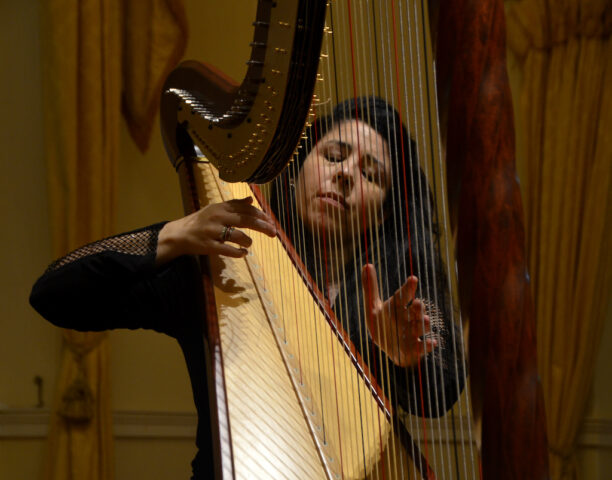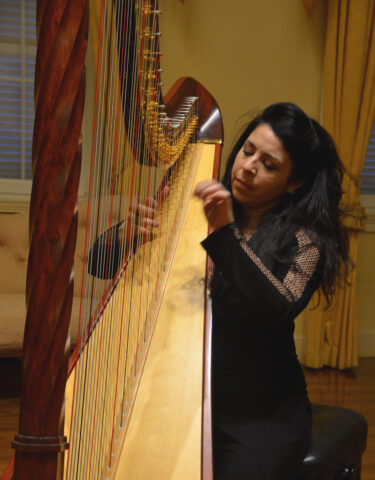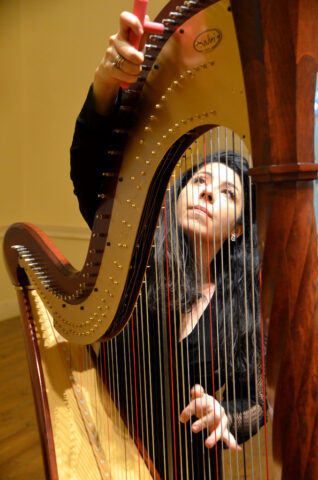Anneleen Lenaerts Harps at the Convent
Photos by Joachim Knodt
PHILARHAMONIC Review by C.Wall
Few things complement the Convent Ballroom like a harp recital. Imperial portraits rhyme with a transparent golden frame, while an otherworldly soundscape transports modern listeners to a more spiritual era.
Hidden are the Gibraltar Philharmonic Society logistics of introducing Anneleen Lenaerts, principal of the Vienna Philharmonic and Vienna State Opera, to an instrument trucked in from Madrid, and asking wonders from the briefest of partnerships. Thankfully, the magic worked.




This was clear from the opening Mozart Fantasia K397, where Lenaerts’ own transcription lightened the D Minor key, where familiar melodies sung more sweetly, and arpeggios swam gracefully. There was more virtuosity in Zabel’s Fantasy on themes from Gounod’s Faust. A mainstay of the harp repertoire, the Zabel showcased a number of different techniques, which Lenaerts illustrated rather gracefully. From an expressive joy in the earlier passages, flowed a part where the harp sang a medieval troubadour, towards the grave solidity of a grand piano. Her movement was precise, always graceful, never showy, confining the drama to the music.
I was especially struck by Lenaerts’ own Fantasy on themes from Puccini’s “La Bohème”. She has spoken of learning 45 new operas in her first season in Vienna, and performing them all without rehearsal, this on an instrument whose pedal movements make sight-reading virtually impossible. Her playing seems extraordinarily attentive to her immediate surroundings, and one can imagine her following the dynamics of each live opera. Lenaerts’ response to “La Bohème” hinted at this skill, condensing the prettiest tunes from Puccini’s vignettes into an expressive tone poem, unhurried, sometimes playful, moving unstoppably towards tragedy.
Schubert’s Ständchen was a late addition to the programme. A familiar theme, perfectly suited to solo harp, elevated by lovely ornamentation. The first half of the recital closed with another operatic fantasy, by Ekaterina Walter-Kühne, on Tchaikovsky’s “Eugene Onegin”. Lenaerts brought out the rich melodies and floated through the most virtuosic passages, though after the dramatic progression of the Puccini, the treatment felt more superficial, fitting the world of Pushkin’s antihero.
“Song to the Moon”, from Dvořák’s Rusalka, opens to a harp solo, and the Lenaerts’ adaptation well captured the shimmering lushness of this beloved aria. Another Lenaerts transcription, “Tanzlied des Pierrot” from the early Korngold opera, “Die tote Stadt”, took the form of a mournful ballad, tender though gloomy. More technically challenging was an adaptation by Hans Trnecek of Smetena’s Vltava (The Moldau), a tone description of the great Czech river, which Lenaerts coloured with different textures and moods, from smooth to grandiose to folksy. The encore, with wood-knocking jazz courtesy of Duke Ellington, came from a master assured of her craft.









